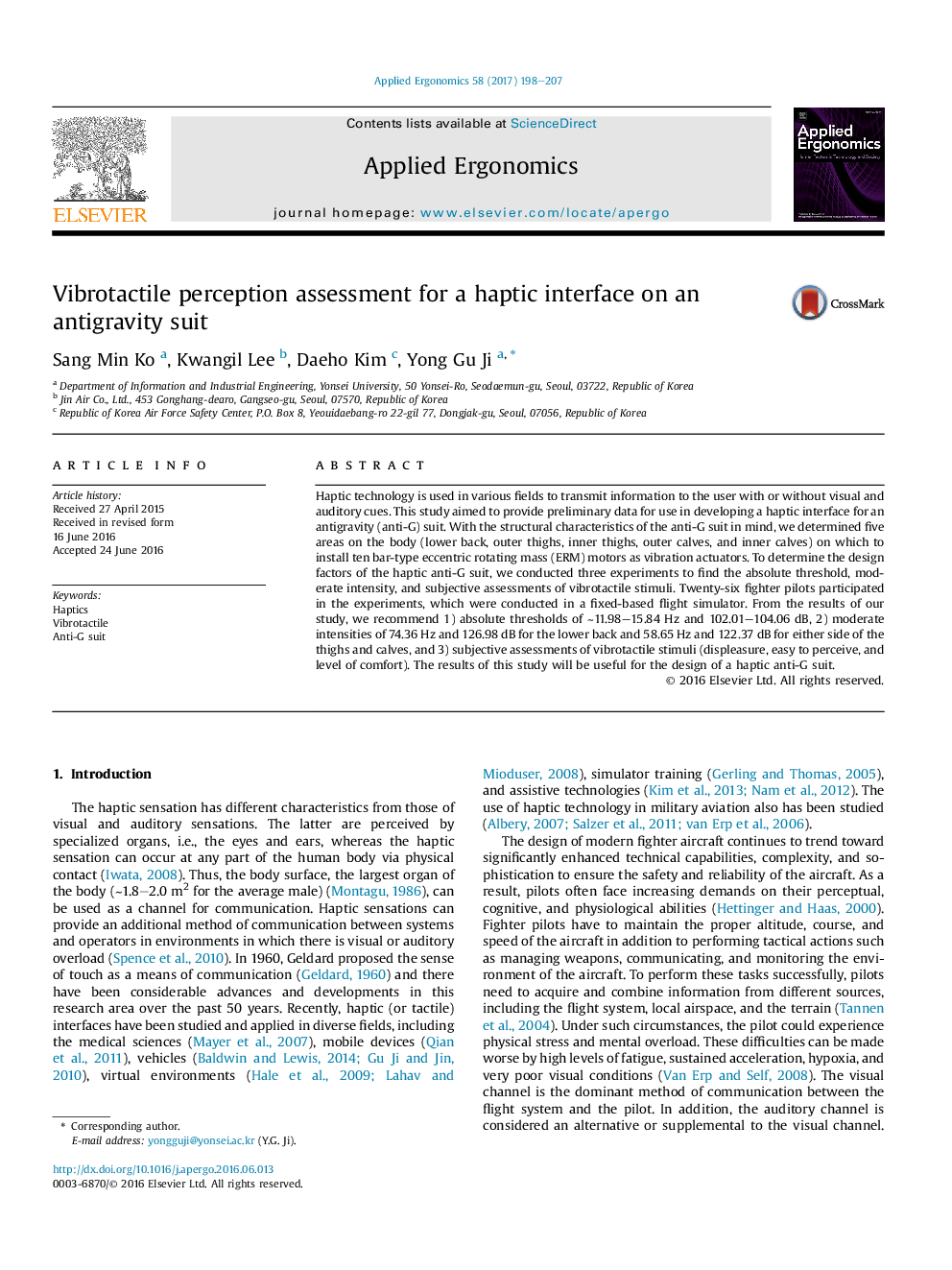| Article ID | Journal | Published Year | Pages | File Type |
|---|---|---|---|---|
| 6947745 | Applied Ergonomics | 2017 | 10 Pages |
Abstract
Haptic technology is used in various fields to transmit information to the user with or without visual and auditory cues. This study aimed to provide preliminary data for use in developing a haptic interface for an antigravity (anti-G) suit. With the structural characteristics of the anti-G suit in mind, we determined five areas on the body (lower back, outer thighs, inner thighs, outer calves, and inner calves) on which to install ten bar-type eccentric rotating mass (ERM) motors as vibration actuators. To determine the design factors of the haptic anti-G suit, we conducted three experiments to find the absolute threshold, moderate intensity, and subjective assessments of vibrotactile stimuli. Twenty-six fighter pilots participated in the experiments, which were conducted in a fixed-based flight simulator. From the results of our study, we recommend 1) absolute thresholds of â¼11.98-15.84Â Hz and 102.01-104.06Â dB, 2) moderate intensities of 74.36Â Hz and 126.98Â dB for the lower back and 58.65Â Hz and 122.37Â dB for either side of the thighs and calves, and 3) subjective assessments of vibrotactile stimuli (displeasure, easy to perceive, and level of comfort). The results of this study will be useful for the design of a haptic anti-G suit.
Keywords
Related Topics
Physical Sciences and Engineering
Computer Science
Human-Computer Interaction
Authors
Sang Min Ko, Kwangil Lee, Daeho Kim, Yong Gu Ji,
